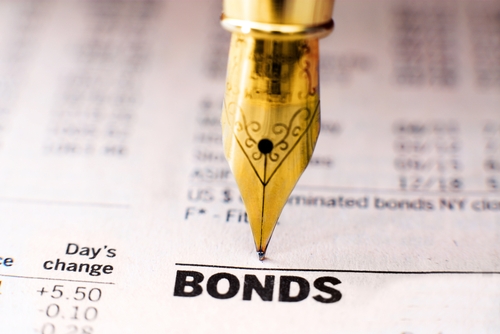Experienced Investor
The outlook for corporate bonds and which offer the best value

Interest rates stuck at near zero and record low government bond yields have pushed fixed income investors up the risk spectrum into corporate bonds.
Corporate bonds are issued by businesses seeking to raise capital.
When investors purchase a corporate bond, they are effectively lending money to a company for an agreed period.
During this time, investors receive interest on their investment – a fixed percentage of their investment known as the coupon – and at the end of the term, they receive their investment back in full – as long as the company hasn’t gone bust in the meantime.
Outlook
The key risks with corporate bonds are value fluctuation, in line with interest rates and inflation, and default, when the issuer cannot repay all or some of the capital and interest.
At the moment, corporate bond default rates are low. For high yield companies the global rate as of end of August was 2.26%.
“In the US, corporate bond default rates are around 2 per cent – we feel the average yield of 7.25 per cent more than compensates for that risk,” says Nick Gartside, manager of the JP Morgan Strategic Bond fund.
However, an interest rate rise on both sides of the Atlantic has long been speculated and may come to pass in the short-term. This raises the obvious question of how well prepared the corporate bond market is for this eventuality.
Tom Stevenson investment director at Fidelity Worldwide Investment, believes rate rises have been expected for so long they have already been priced in.
“It’s normal for there to be something of a sell-off in corporate bonds ahead of the onset of rate increases but investment grade, high yield and emerging market bond spreads (the gap between their yields and those on safe government bonds) are wider than ahead of previous upturns in rates,” he notes.
“That provides a decent cushion for owners of corporate debt, especially as spreads can often narrow if slow and steady rate rises are a reflection of robust economic growth.”
Furthermore, Stevenson believes a rate rise could be seen as a vote of confidence in the US economy by investors, businesses and consumers, which would in turn strengthen the corporate bonds market.
“It would be wrong to expect too much in the way of capital growth, but total returns in line with yields look attractive when coupled with the diversification benefits that bonds bring to a portfolio,” he says.
Manager views
Three corporate bond managers reveal where they think the best value lies:
Michael Scott, manager of the Schroder Monthly High Income fund, believes the most attractive corporate bond opportunities are in the UK.
“Given the macro outlook, and the country’s position in the credit cycle – the low growth, low inflation outlook will continue to drive positive returns in the asset class,” he says.
Of particular interest to Scott is the UK financial sector. Banks comprise five of his fund’s top 10 holdings, with RBS, Virgin Media Finance and Barclays featuring prominently.
Due to regulatory pressure, banks are increasingly required to hold more equity as a result of rising capital requirements, meaning they progressively depend on corporate bond issuance to raise money for short-term expenditure. In return, investors can expect yields as high as 10 per cent.
“They are very well placed to benefit from the continued recovery in the UK economy, having shed substantially all their problematic pre-crisis era assets and significantly reducing their reliance on flighty sources of funding,” he says.
He also likes corporate bonds issued by big consumer names in the UK.
“Unemployment is falling and wages are rising, and there’s growing consumer confidence. This significantly reduces default risk,” Scott says.
Gartside urges investors to look further afield.
“There really is a lot investors can do in bonds globally – why limit yourself to a narrow investment universe and concentrate your risk?” he explains.
“In Europe, corporate debt and high yield bonds look quite interesting, as they offer an average 4.75 per cent yield. Lots of companies are deleveraging, and export focused businesses are benefiting massively from the weak euro.”
Financial sector corporate bonds comprise around 15 per cent of his fund’s portfolio. Key holdings include Fannie Mae and the Federal Home Loan Mortgage Corp.
Gordon Harding, senior fixed income investment specialist at M&G, is bullish on the US market.
“There’s been lots of investment grade bond issuance in the US in 2015 – in fact, several months this year have seen record levels of issuance,” he says.
“The bonds are very cheap – they’re usually only cheaper in times of crisis, but there’s no crisis on the horizon. Companies are trying to beat the Federal Reserve rate hike and borrow for extended periods at low rates.”
In terms of specific sectors to watch, Harding tips telecoms. In April this year, AT&T offered up $17.5bn in corporate bonds, the third largest deal of its kind in history. In 2013, Verizon issued the largest corporate bond ever, and has periodically issued more to refinance the sale.
Investors are urged to approach corporate bonds in emerging markets with caution – at least for the time being.
“China’s struggles will cause volatility in emerging markets in the short-run – we saw that with Brazil’s recent downgrade,” notes Gartside.
“Although, emerging markets should stay on the longer-term investor’s radar screen. The time to buy will come, but that time isn’t right now.”
[article_related_posts]